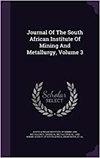南非锰矿在回转窑预热过程中产生的细粒
IF 0.9
4区 材料科学
Q3 Materials Science
Journal of The South African Institute of Mining and Metallurgy
Pub Date : 2023-01-17
DOI:10.17159/2411-9717/1724/2022
引用次数: 0
摘要
锰矿石是生产锰铁合金的锰的主要来源。对锰矿石爆裂行为的认识存在差距,这给冶炼厂的运营带来了问题。衰变,即矿石颗粒在加热时的破碎,是这些矿石的一个重要质量参数。本次调查的目的是确定南非锰矿在回转窑预热过程中的衰变程度。研究了温度、转速和颗粒尺寸对爆裂的影响。锰矿石在实验室规模的回转窑中加热,温度分别为600、800和1000°C,转速分别为3、6和12 r/min。尺寸范围为+6-20、+20-40和+40-75mm,停留时间恒定为30分钟。爆裂指数(DI)量化为预热后<6mm颗粒的质量与样品总质量的比率。研究发现,所用所有矿石的DI与温度和转速成正比,与粒度范围成反比,其中温度是最重要的参数。矿石A最易发生爆裂,其次是矿石C和矿石B;这主要是由于kutnohorite的分解,其含量在A矿中最高,在B矿中最低。本文章由计算机程序翻译,如有差异,请以英文原文为准。
Fines generation from South African manganese ores during preheating in a rotary kiln
Manganese ores are the major source of manganese for the production of manganese ferroalloys. There is a gap in the knowledge of the decrepitation behaviour of manganese ores, which presents a problem in the operation of smelters. Decrepitation, which is the breakage of the ore particles upon heating, is an important quality parameter for these ores. The purpose of this investigation was to determine the extent to which South African manganese ores decrepitate during preheating in a rotary kiln. The effects of temperature, rotational speed, and particle size decrepitation were investigated. Manganese ores were heated in a laboratory-scale rotary kiln at temperatures of 600, 800, and 1000°C, and rotational speeds of 3, 6, and 12 r/min. The size ranges were +6-20, +20-40, and +40-75 mm and the residence time was constant at 30 minutes. The decrepitation index (DI) is quantified as the ratio of the mass of <6 mm particles after pre-heating to the total mass of the sample. It was found that the DIs for all ores used were proportional to the temperature and the rotational speed and inversely proportional to the particle size range with temperature being the most important parameter. Ore A was the most susceptible to decrepitation followed by ore C and ore B; this was mainly to the decomposition of kutnohorite, the content of which was the highest in ore A and the lowest in ore B.
求助全文
通过发布文献求助,成功后即可免费获取论文全文。
去求助
来源期刊
CiteScore
1.50
自引率
11.10%
发文量
61
审稿时长
4-8 weeks
期刊介绍:
The Journal serves as a medium for the publication of high quality scientific papers. This requires that the papers that are submitted for publication are properly and fairly refereed and edited. This process will maintain the high quality of the presentation of the paper and ensure that the technical content is in line with the accepted norms of scientific integrity.

 求助内容:
求助内容: 应助结果提醒方式:
应助结果提醒方式:


